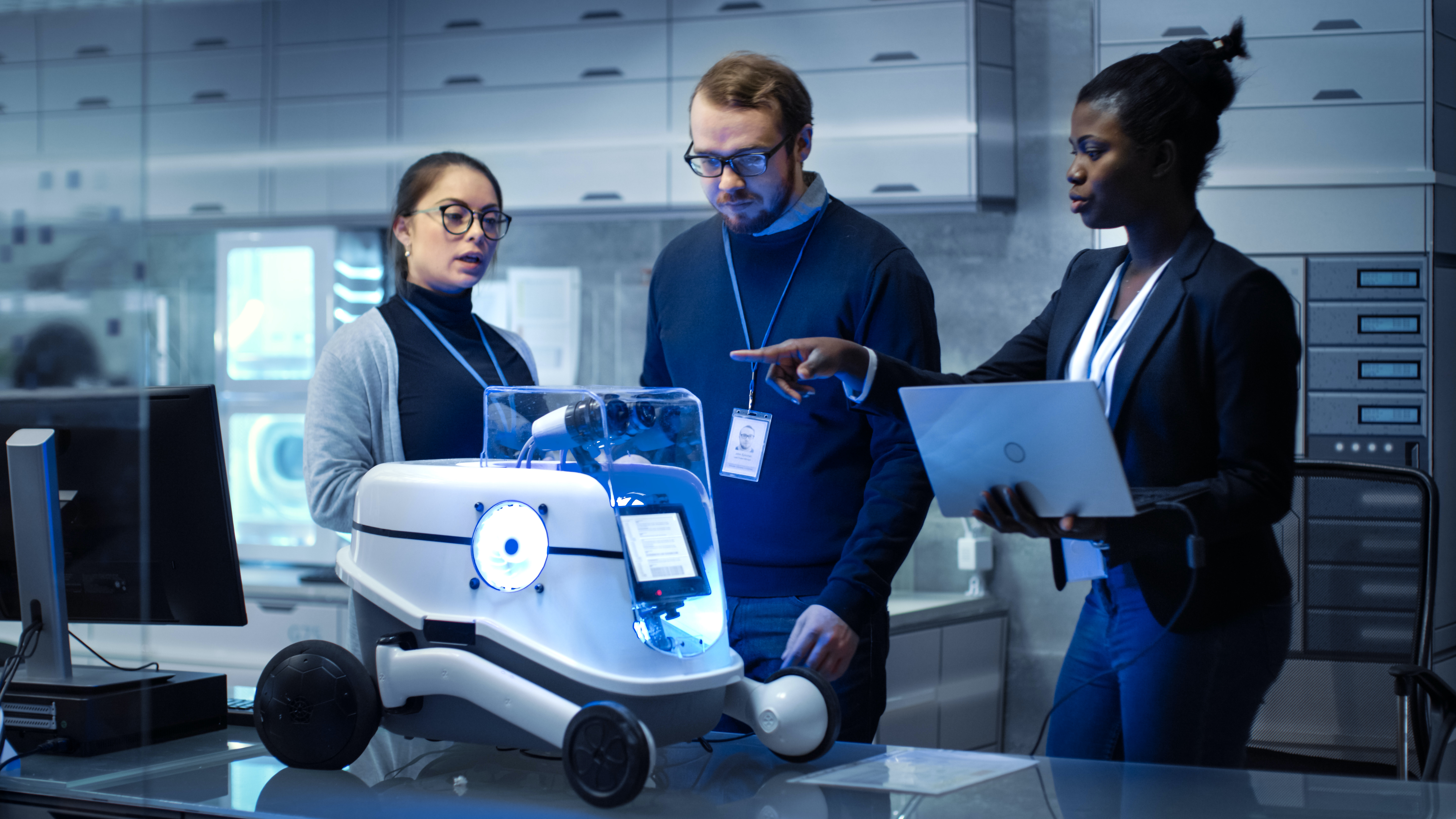From the desk of SoftBank Robotics’ VP of Rev Ops, Customer Experience and Growth….
When I talk to clients about their experiences with robots in their work environment, and specifically cobots, which work alongside people, the feedback is always the same. Up until this point in time, robot adoption has not kept pace with the expectations of the business investment and in many cases has failed to maintain momentum in operations.
What is interesting is that the same set of challenges I observed (while with PwC, IBM, and Accenture) that were faced in large global complex technology rollouts (e.g., Salesforce, SAP, Workday) are actually very similar to the set of adoption issues faced in rolling out workplace robotic programs.
Before beginning any program, we always tried to assess the current state of the organization that would be adopting the new technology. We looked at how they did work today, if the new tech would require them to use it, or they could work around it, what leadership expectations were on adoption, and how we could measure the success of adoption. Having this type of insight provided an understanding of where there could be risk and where additional effort would be needed to close any gaps.
Once the technology rolled out, the change management team would stay on for at least a few more weeks or months, helping to tweak the training, supporting communications, and tracking the metrics that demonstrated the adoption progress.
The approach we use at SoftBank Robotics to drive successful Robot Program adoption, is based on the same principles of change management for complex enterprise technology rollouts I just described. Let me explain in detail how we ensure successful adoption:
1. Define the value of the program
There are many dimensions of value besides the obvious target of ROI. We discuss several with our clients including increased consistency of outcomes, proof of outcomes with data, cost of investment vs. usage, experience of guests or residents or employees, and promoting an image that is consistent with their brand. The key is to define these objectives so that they can become the lens that showcases the value of the program. There are different people in the ecosystem who will have different values or who will prioritize the values differently. Taking this into consideration will inform how we report and communicate success (discussed below).
2. Assess the environment for change readiness
We work with new clients to understand their environment before any new technology is introduced. We want to understand the people operating the robots, the people who manage the operators, and the people who care about seeing evidence the program is succeeding and delivering on the value. We notice if they have prior experience with robots (most do not) and data & analytics. We take the “temperature” for change and try to figure out where our advocates will come from and who may be blockers.
3. Plan to transform work
We also consider the current state of how work gets done today. We look at the time window for performing activities, days per week, how work is scheduled, and other priorities in the operation. This is essential because we expect to transform work. That means the new schedule and work priorities will be different from today. For instance, today the operations group may only perform certain activities a few hours a week. But in the future state, the robot will allow new priorities to be set, which can then allow more time for multiple activities. This is possible because a robot transforms activity from a 1:1 relationship to a many: many relationship. In a 1:1 relationship, the activity and the human are tied together, so only one activity may be performed by that person at that time. The activity is equal to the priority. The robot program can enable a many: many relationship where many humans can manage many robots at the same time (hence the name “cobotics”, or collaborative robotics). This creates the opportunity to have multiple activities happening simultaneously, while also allowing new priorities. In this desired state, the labor can be optimized based on the value of the activity.
4. Tailor the training
Before we ever do any training, we want to understand the learning styles of the people we are going to be training. We want to understand what methods of communication they will be using daily and weekly to receive information on the program. We want to understand if there are language preferences. As an example, we are finding that short videos that can be texted to a phone are becoming increasingly more impactful in getting desired results. We also find that having to read directions can be a barrier for learning. Therefore, it is important to be flexible, as most organizations will require multiple training methods to accommodate the different learning styles.
5. Measure and respond
Continuous feedback is essential to ensuring the program is successful in transitioning from adoption to production phase. We know that people are the weak link in a robotic program and without the right data and reporting that shows things are on or off track, there is always a risk for successful programs to suddenly fail. Also, another observation I’ve made is that clients believe if they’ve invested in the training (once) then they’ve successfully adopted the tech. But training is not the same thing as adoption– it’s just a step in the overall program. And since people are constantly coming into and out of organizations, training must keep pace as well. Hence, why reporting and analytics are essential to getting ahead of program risk before programs veer too off track.
6. Continuous communications
Leadership support takes many forms, including communications to the managing team on the importance of the program and their role and reviewing the data to understand who is going off course and who is knocking it out of the park. Good data and analytics don’t waste leadership time and is designed for Management by Exception, so the problems are very clearly identified, and actionable next steps can be taken.
At the end of the day, the actual tech doesn’t really matter whether the program is successful or not. It’s just the enabler to do something else, which is to transform the way work is done by the organization. This transformation should create meaningful value for everyone in the ecosystem. That means that people will work differently. The processes in which they work, focus, and prioritize will be different. The way productivity is measured will be new. And the way that leadership reviews and supports performance will be different. All this change is essential for the successful adoption of a workplace robotic program
I would welcome your thoughts and experiences on adopting robotics in your workplace.
Best,
K G Wood-Maris
A version of this article was originally posted on VentureBeat.







